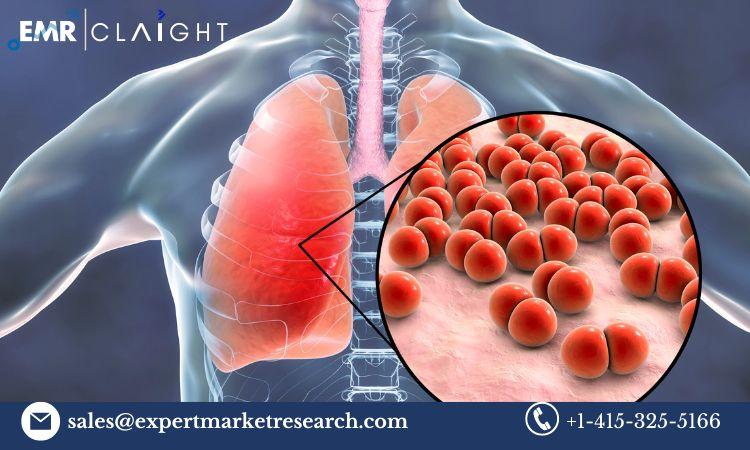The healthcare landscape is witnessing significant advancements in pathogen reduction systems, a market projected to grow at a staggering Compound Annual Growth Rate (CAGR) of 19.8% between 2024 and 2032. With rising concerns about bloodborne diseases and a heightened focus on patient safety, pathogen reduction technologies are becoming an indispensable part of the medical field. From reducing the risk of infections to meeting the stringent safety regulations, these systems are transforming the way blood transfusions and cellular therapies are managed worldwide.
In this blog, we’ll explore the latest trends in the pathogen reduction systems market, key players driving innovation, and the factors contributing to its rapid growth.
1. Growing Incidence of Bloodborne Diseases: A Key Driver
The surge in bloodborne diseases, such as HIV, hepatitis B and C, and emerging pathogens like Zika and West Nile viruses, has placed a spotlight on blood safety. Governments and healthcare providers are prioritizing pathogen reduction systems to minimize infection risks. In regions with high disease burdens, such as Sub-Saharan Africa and parts of Asia, the demand for effective blood pathogen reduction is increasing rapidly.
2. Advancements in Pathogen Reduction Technologies
Technological innovations are at the heart of the pathogen reduction systems market. Modern systems are more efficient, targeting a broader range of pathogens and reducing the need for donor deferrals. One example is Cerus Corporation’s INTERCEPT Blood System, which inactivates pathogens in platelets and plasma, ensuring safer transfusions. This product is setting new standards in the market by significantly reducing the transmission risk of viruses, bacteria, and parasites.
Another notable player, Terumo BCT, has been expanding its portfolio with advanced blood component technologies that enhance the reliability of transfusions. The focus on innovation is a key reason behind the impressive market growth, as companies push the envelope in developing next-gen solutions for blood safety.
3. Increasing Focus on Patient Safety
Patient safety initiatives are gaining global momentum, with healthcare providers and organizations like the World Health Organization (WHO) emphasizing the need for safer blood products. Hospitals and blood banks are increasingly adopting pathogen reduction systems to ensure that transfusions are free from harmful pathogens. These systems not only protect recipients but also give peace of mind to healthcare professionals working in critical care and emergency settings.
4. Key Players Dominating the Pathogen Reduction Systems Market
Several companies are leading the charge in pathogen reduction systems with innovative products and strategic growth plans:
- Terumo BCT, Inc.: A Colorado-based subsidiary of Terumo Corp., it offers advanced solutions in blood management and transfusion safety, contributing to its leadership in the market.
- Macopharma SA: Specializing in transfusion and biotherapy systems, the company’s Theraflex MB pathogen reduction system is designed to inactivate pathogens in plasma, ensuring safe transfusion practices.
- Cerus Corporation: Known for its INTERCEPT Blood System, Cerus is pioneering technologies that enhance the safety of blood transfusions by inactivating pathogens across blood components.
- AngioDynamics, Inc.: A New York-based company that stands out for its innovative contributions to the pathogen reduction space, with a focus on cutting-edge technology.
These companies, alongside others like Octapharma AG and Pathogen Reduction Solutions Ltd., are pushing the boundaries of what pathogen reduction systems can achieve.
5. Market Trends: What to Watch For
Here are some of the latest trends shaping the pathogen reduction systems market:
- Regulatory Approvals Gaining Pace: As regulatory bodies like the FDA and EMA ramp up safety standards, more pathogen reduction systems are receiving approvals, speeding up their adoption in hospitals and blood banks.
- Strategic Partnerships and Mergers: Collaborations between biotech companies, hospitals, and blood banks are driving growth. For example, Cerus Corporation has forged partnerships across Europe and the U.S., enhancing its market presence.
- Rising Demand in Emerging Markets: Countries in Asia-Pacific and Latin America are experiencing rapid healthcare infrastructure development, leading to increased demand for pathogen reduction systems. Governments in these regions are investing in blood safety technologies to meet global standards, creating new growth opportunities.
- Focus on Biotherapy Systems: With the growing popularity of biotherapy, companies like Macopharma are developing specialized pathogen reduction systems that cater to cellular therapies, plasma treatments, and more.
6. Future Outlook: What’s Next for the Pathogen Reduction Systems Market?
The future looks bright for the pathogen reduction systems market, with opportunities for growth in both developed and emerging economies. The increasing need for safe blood products, especially in light of global health concerns like pandemics and outbreaks, will continue to drive innovation. Furthermore, advancements in technology, such as next-generation pathogen inactivation solutions, will likely push the market to new heights by 2032.



